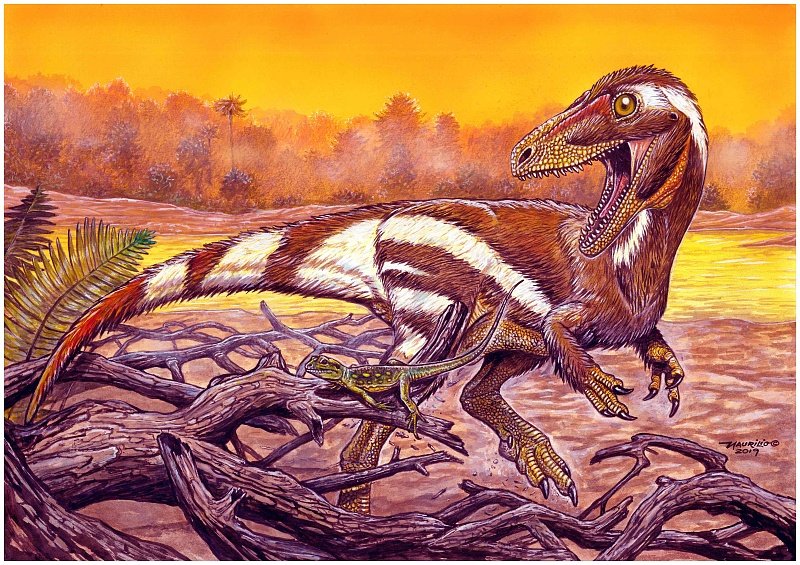Three years ago, researchers from the Federal University of Pernambuco and the National Museum of Brazil jointly released their results in Rio de Janeiro, describing the discovery of a new species of dinosaur that was discovered petrified in the Araripe Basin in Ceará, northeastern Brazil.
A file photo shows dinosaur fossils found in the Araripe Basin in Ceará, Brazil in 2020. /CFP
The Aratasaurus, a carnivorous dinosaur that lived between 115 million and 111 million years ago, is the name given by archaeologists to this sort of dinosaur. It measured 3.12 meters in length and weighed about 34.25 kilos when it was petrified. It was discovered that the dinosaur was not fully matured when it died after dating the petrified dinosaur bones.
A model of Aratasaurus, a carnivorous dinosaur during the Cretaceous period /CFP
The dinosaur remains were discovered in the Araripe Basin, which was formerly a sizable lake. With the influx of sea water, the lake's salinity varied over time. This region had been home to a wide variety of animals and flora for hundreds of millions of years. Archaeologists now know that there were many more dinosaur species in the area than previously thought, thanks to the discovery of dinosaur remains.
According to archaeologists, this kind of dinosaur is known as the Aratasaurus, a carnivorous dinosaur that lived during the Cretaceous period. /CFP
Archaeologists claim that this dinosaur from Brazil is related to a different kind of dinosaur that was found in Xinjiang, northwest China, in 2001. The dinosaur was found in the upper Wucaiwan, where it had previously lived in the late Jurassic period about 160 million years ago. This kind of dinosaur, known as "Zuolong" in Chinese, is comparable to the Aratasaurus in terms of size, length, and weight. Both of them lived in arid environments.









